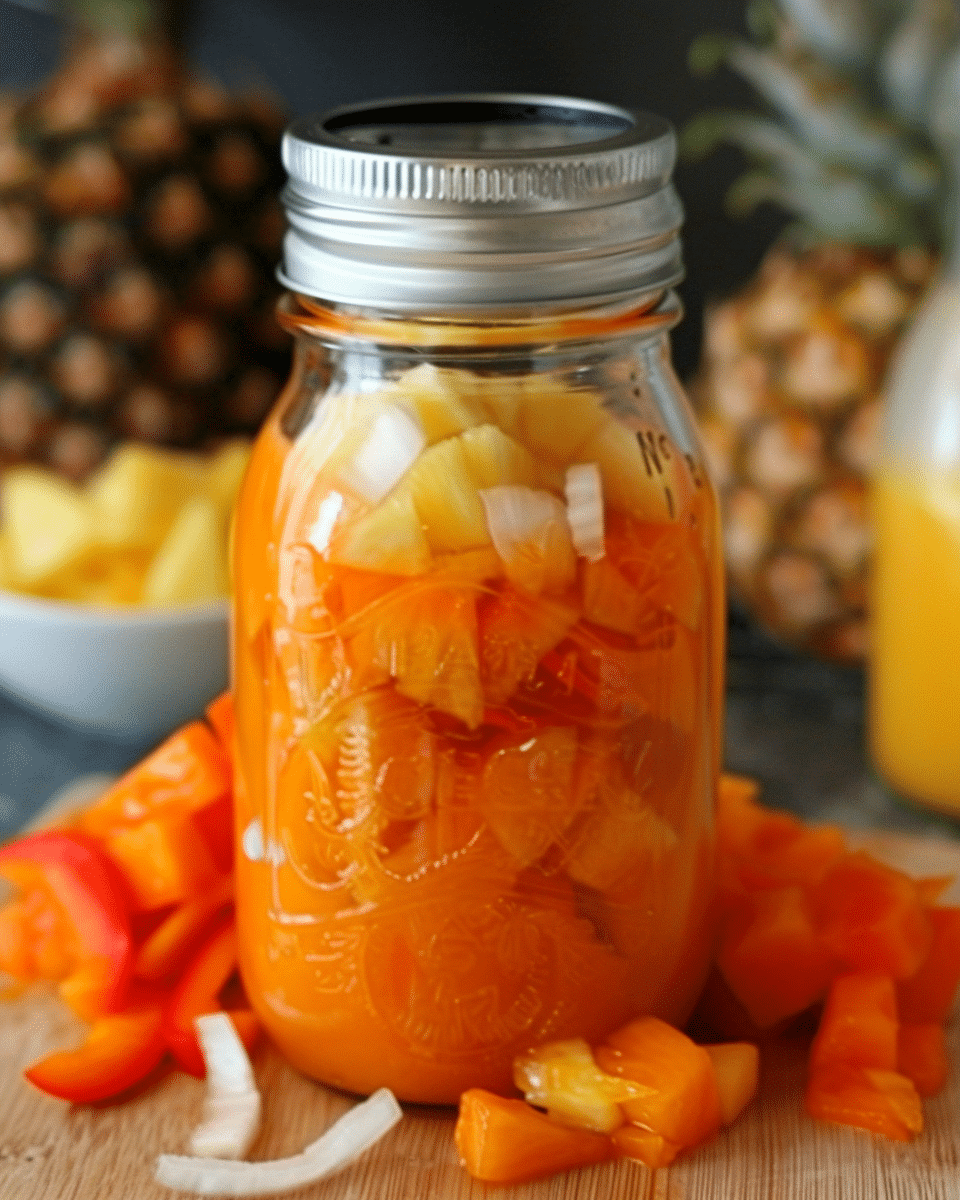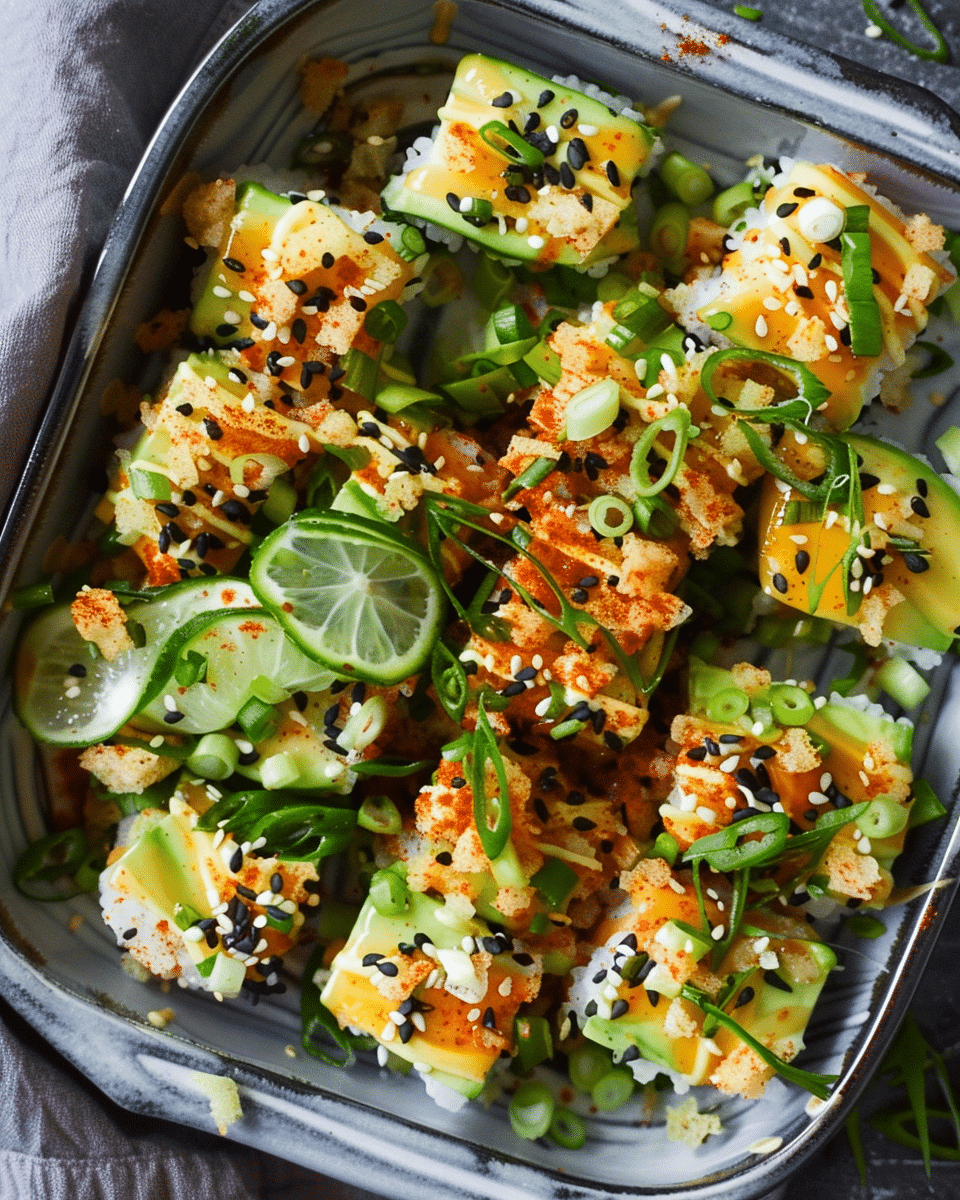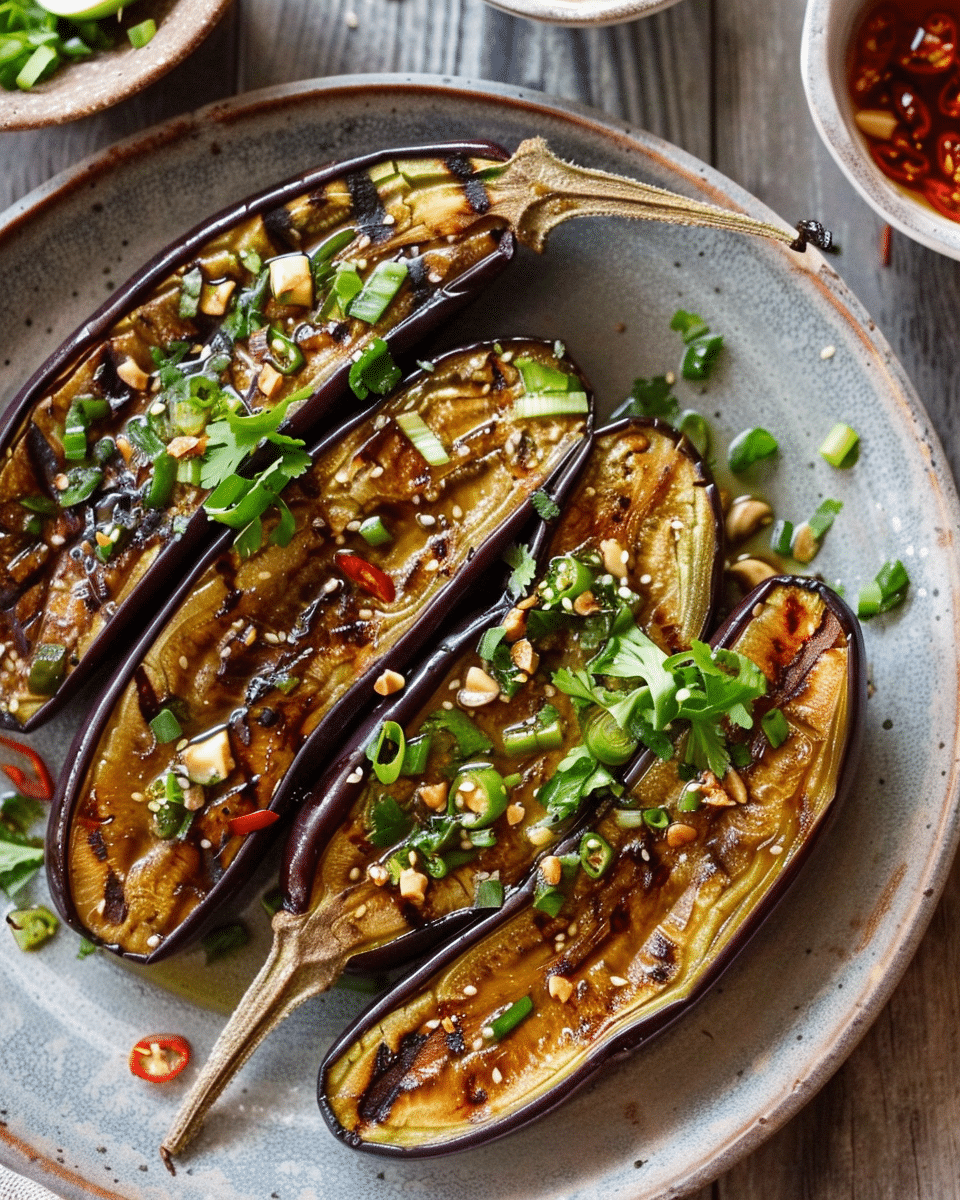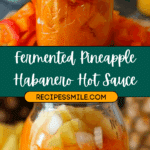A fiery, tropical, and tangy hot sauce, this fermented pineapple habanero blend brings bold heat, natural acidity, and probiotic richness to the table. By letting nature do the work, I get a sauce that’s not just spicy—but deep, vibrant, and full of character. The fruity sweetness of pineapple balances the kick of habanero, while garlic and onion provide savory depth. Whether drizzled on tacos, stirred into rice bowls, or added to marinades, this homemade hot sauce levels up any dish.
Why You’ll Love This Recipe
I love this recipe because it combines heat, fruitiness, and fermentation in one beautifully complex sauce. The fermentation process enhances the flavors naturally, giving it a unique tang that can’t be replicated with vinegar alone. It’s a gut-friendly condiment, packed with natural probiotics, and it’s completely free from artificial preservatives. Plus, it’s fully customizable—I can adjust the heat, tang, or even play with fruit variations to suit my taste.
Ingredients
(Tip: You’ll find the full list of ingredients and measurements in the recipe card below.)
2 cups fresh pineapple, chopped
4-6 habanero peppers, stemmed (seeds removed for less heat, optional)
4 cloves garlic, peeled
1 small white onion, chopped
1 tablespoon sea salt (non-iodized)
2 cups non-chlorinated water
2 tablespoons apple cider vinegar (added post-fermentation)
Optional: juice of 1 lime for extra tang
Directions
I start by placing the chopped pineapple, habaneros, garlic, and onion into a clean glass jar or fermentation vessel.
In another container, I dissolve the sea salt into non-chlorinated water to create a brine.
I pour the brine over the pineapple and peppers until everything is fully submerged. Then I weigh the contents down using a fermentation weight or a small glass to keep them beneath the brine.
I cover the jar with a fermentation lid or a clean cloth secured with a rubber band to let gases escape.
The jar goes into a cool, dark place for 5–10 days. I begin tasting around day 5 to monitor the tang and flavor development.
Once I’m happy with the taste, I transfer the solids (and some of the brine) into a high-speed blender.
I add the apple cider vinegar (and lime juice if I want extra tang), then blend until smooth. I adjust the consistency by adding more brine if needed.
The final sauce gets poured into sterilized bottles or jars and stored in the fridge, where it continues to develop in flavor over time.
Servings and timing
Prep Time: 20 minutes
Fermentation Time: 5–10 days
Total Time: approx. 5–10 days
Servings: approx. 20 servings (yields about 1.25 cups)
Calories: 8 kcal per tablespoon
Variations
Milder version: I reduce the number of habaneros or remove the seeds entirely for a less intense heat.
Fruit swaps: I like to swap pineapple for mango or papaya for different tropical notes.
Add herbs: A handful of fresh cilantro or basil post-fermentation adds a bright herbal twist.
Extra savory: Adding a few roasted garlic cloves instead of raw gives it a deeper umami profile.
Smoke it up: I use smoked habaneros or char the pineapple for a smoky depth.
Storage/Reheating
I always store the finished hot sauce in sterilized glass bottles or jars in the refrigerator. It stays fresh for up to 3 months, though the flavor keeps evolving the longer it sits. Since it’s a fermented product, I don’t heat it—this would kill the beneficial probiotics. If the sauce thickens over time, I just stir in a splash of water or brine to thin it out.
Related Recipes:
FAQs
How spicy is this fermented pineapple habanero hot sauce?
It’s quite spicy! Habaneros pack a punch, but I can control the heat by removing the seeds or using fewer peppers. The sweetness of the pineapple does help mellow the burn a bit.
Can I use canned pineapple instead of fresh?
Fresh pineapple works best for fermentation due to its natural sugars and enzymes. Canned versions often contain preservatives that can interfere with the fermenting process.
How do I know if my fermentation is successful?
I look for bubbles, a tangy smell, and a slight change in color. As long as everything stays submerged and there’s no mold (which is rare when submerged properly), it’s fermenting safely.
Can I ferment it longer than 10 days?
Absolutely. Longer fermentation gives deeper flavor and more tang. I just keep tasting every day or two after day 5 until I find the flavor I like.
Is it safe to leave the sauce unrefrigerated after fermenting?
Once blended and bottled, I always refrigerate it to preserve freshness and slow down further fermentation. Leaving it out can cause spoilage or excessive pressure buildup in the container.
Conclusion
This fermented pineapple habanero hot sauce is one of those recipes that rewards patience with big flavor. I love how it brings together tropical sweetness, sharp heat, and probiotic zing in one vibrant bottle. It’s not just a condiment—it’s a flavor enhancer, a gut-friendly ferment, and a spicy staple in my kitchen. Whether drizzled, dipped, or marinated, this sauce brings bold energy to everything it touches.
📖 Recipe:
Print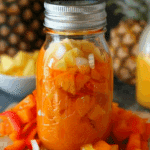
Fermented Pineapple Habanero Hot Sauce
5 Stars 4 Stars 3 Stars 2 Stars 1 Star
No reviews
- Author: Isabella
- Total Time: 5–10 days
- Yield: Approximately 1.25 cups (about 20 servings)
- Diet: Vegan
Description
A fiery, tropical, and tangy hot sauce made by fermenting pineapple, habaneros, garlic, and onion to create a probiotic-rich, naturally acidic condiment with deep, complex flavor.
Ingredients
2 cups fresh pineapple, chopped
4–6 habanero peppers, stemmed (seeds removed for less heat, optional)
4 cloves garlic, peeled
1 small white onion, chopped
1 tablespoon sea salt (non-iodized)
2 cups non-chlorinated water
2 tablespoons apple cider vinegar (added post-fermentation)
Optional: juice of 1 lime for extra tang
Instructions
- Place the chopped pineapple, habaneros, garlic, and onion into a clean glass jar or fermentation vessel.
- In a separate container, dissolve the sea salt in non-chlorinated water to create a brine.
- Pour the brine over the pineapple and peppers until fully submerged. Use a fermentation weight or small glass to keep the contents beneath the brine.
- Cover the jar with a fermentation lid or a clean cloth secured with a rubber band to allow gases to escape.
- Store the jar in a cool, dark place for 5–10 days, tasting around day 5 to monitor flavor development.
- Once the desired tang is reached, transfer the solids (and some brine) to a high-speed blender.
- Add apple cider vinegar and lime juice (if using), then blend until smooth. Adjust consistency with more brine if needed.
- Pour the sauce into sterilized bottles or jars and store in the refrigerator.
Notes
For a milder sauce, use fewer habaneros or remove the seeds.
Try fruit swaps like mango or papaya for a different flavor profile.
Adding fresh herbs like cilantro or basil post-fermentation offers a bright twist.
Roasted garlic instead of raw can add umami depth.
Use smoked habaneros or char the pineapple for a smoky variation.
Do not heat the sauce after fermentation to preserve probiotics.
- Prep Time: 20 minutes
- Cook Time: 0 minutes
- Category: Condiment
- Method: Fermentation
- Cuisine: Fusion
Nutrition
- Serving Size: 1 tablespoon
- Calories: 8
- Sugar: 1g
- Sodium: 140mg
- Fat: 0g
- Saturated Fat: 0g
- Unsaturated Fat: 0g
- Trans Fat: 0g
- Carbohydrates: 2g
- Fiber: 0g
- Protein: 0g
- Cholesterol: 0mg


